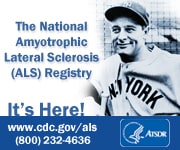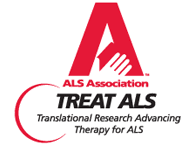In memory of Douglas Edwin Eshleman, who lost his battle with ALS on
Nov. 28, 2001, he was only 43.
According to The American Heritage Dictionary, an advocate is one who:
· Speaks in favor of or recommends something
· Argues for a cause
· Is a supporter or defender
· Pleads in another's behalf
To be successful, the advocate must dedicate work to some or all of the following areas:
· Raising awareness
· Raising money
· Applying political pressure
· Recruiting more advocates
Every group whose members are brought together for a common cause has its advocates. In the work force, worker advocacy groups are labor unions, which wield considerable power due to the solidarity of the workers. The unions have the power to shut down production and bring work to a standstill. Labor unions are formed through the efforts of advocates who desire better working conditions for the employees.
Other groups who share common goals and desires have their advocates as well. The group may be bound together by age such as AARP, by issues such as Greenpeace, and by disease such as people with AIDS. The more advocates a group has and the more effort put forth by the advocates, the more successful the group will be in accomplishing its goals.
All of us with ALS are members of the union of PALS (People with ALS). We are united by disease and we have the common goal of finding a cure. We are no different from other advocacy groups although there are two factors which make our job of raising awareness and applying political pressure more difficult. First, we are a relatively small group. It is estimated there are only 30,000 PALS alive in the U.S. at any one time. Even if everyone of those 30,000 were hard working ALS advocates, we still would not have the clout that other disease groups have. AIDS and cancer advocates number in the millions. Second, the members of our union of PALS become weak so quickly and die so soon that little time or energy is left to be advocates. Half of all PALS die within 18 months of diagnosis.
Yet, even with these grim statistics, many PALS and their friends and loved ones press on determined to have their voices heard. Our lives are on the line and many of us become involved in advocacy because we realize if we do not fight for our cause no one else will. The old saying "The squeaking wheel gets the grease" rings true. We know that we my not have the loudest voice but we want to make sure we have a voice that will be heard.
How can PALS and their supporters be advocates? The great thing about advocacy is that a small effort can have large results. My friend, Janis, who is typing this for me, is a good example. Last year during ALS Awareness month in May, she wore the ALS ribbon on her blouse for the entire month. This took very little effort on her part, but she raised awareness about the disease. At least 10 of her co-workers asked her about the ribbon and there were probably others who heard through the grapevine what the ribbon was for.
ALS advocacy can be done through both group and individual efforts. Large national organizations which help PALS such as the MDA and the ALS Association draw strength from the efforts of PALS supporters who volunteer their time and money. Local ALSA chapters are composed almost entirely of volunteers who are advocates for the cause. It is easy for PALS and their families to become members of these groups. There is strength in numbers and the more PALS who are involved the more our message will be heard.
In the past 2 or 3 years numerous new ALS advocacy groups have sprung up with the goal of raising money for research. Project ALS is an organization run by three sisters, one of whom has ALS. Through their contacts in the entertainment industry, they have raised over $1.5 million dollars. Two other groups, Hope For ALS and ALS Therapy Development Foundation, were begun by PALS and their families who were frustrated at the slow pace of conventional research. Money raised by these groups is already going to fast track research projects unencumbered by bureaucratic red tape.
Other PALS created groups such as ALS March of Faces are continually bringing forth new innovative projects to raise money and awareness. ALS March of Faces has helped raise over $1 million dollars and educated countless persons from creative efforts such as selling ALS awareness ribbons and organizing a cross-country bus tour.
All of these groups need money and volunteers. Everyone who gets ALS is told by well-meaning friends, "If there is anything I can do..." Tell them there is much they can do, beginning with donating time and/or money to one of the ALS advocacy groups. The names and addresses are listed below. Contact one of them to learn how you can make a difference. If every PALS family makes a concerted effort at ALS advocacy, we will soon have the resources to develop research to find a cure.
The ALS Association
27001 Agoura Road, Suite 150, Calabasas Hills, CA 91301-5104
Phone: 888-949-2577, Website: http://www.alsa.org/
Muscular Dystrophy Association
P.O. Box 78342, Phoenix, AZ 85062-8342
Phone: 800-344-4863, Website: http://www.mdausa.org/
ALS Therapy Development Foundation
218 Mill Street, Newton, Massachusetts 02460
Phone: (617)796-8826, Website: http://www.als-tdf.org/
Hope for ALS
7822 Santa Elena, Suite 100, Houston, TX 77061
Phone: 713-643-2898, Website: http://www.hopeforals.com/
The ALS Survival Guide
http://www.alssurvivalguide.com
A web site about ALS by Doug Eshleman
Wednesday, March 17, 2010
Subscribe to:
Post Comments (Atom)










1 comment:
Thanks for that piece. FYI, we are the ALS Therapy Development Institute (ALS TDI)and we are located at 215 First STreet, Cambridge, MA, 02142.
To Sleepy's point, the amount of funding to care versus research isn't the issue in totality. The issue is, "what type of research is being conducted?". ALS therapeutic development is tragically underfunded. AT ALS TDI from every dollar we raise, about 85% is used to conduct research which directly leads to the creation of therapeutics. The ALS Association spends only 17% (less than $7M) on research from revenues nationally that are around $40-$45M. That is 17.5%. That money is predominantly going into post-graduate research programs that are dealing mostly in discovery biology. No therapeutic endpoint. This is a major reason there is no fast tracking of drugs for ALS patients. That and industry perspective is that money spent on drug discovery for a realtively low-profit population is not sound business. This paradigm must be blown up. Contact me if you'd like more info, or to discuss.
Post a Comment